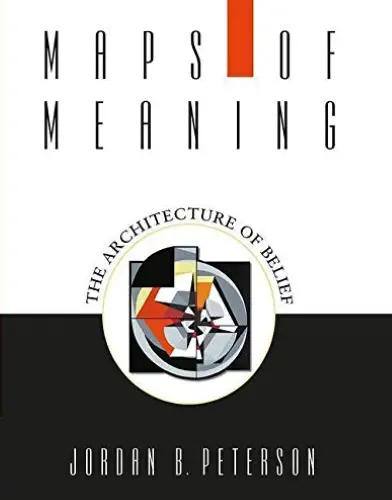Maps of Meaning
Book Author: Jordan Peterson
Summary reviewed by:
Terrence Timmons
Terrence Timmons
Analyst
Bachelor of Arts (BA), University Of California, Santa Barbara 2019
With over 4 years of experience as an analyst. Terrence Timmons is committed to analyzing summaries without compromising on quality.
Maps of Meaning: Summary
Unlock the profound mysteries of existence, as we journey through the Maps of Meaning, where Jordan Peterson distills the essence of mythology, religion, and psychology into a grand unified theory of human understanding." Jordan B. Peterson's "Maps of Meaning: The Architecture of Belief" provides a deep dive into the architecture of human belief systems.
The book is an exploration of the psychological significance of the stories and myths that have shaped humanity, providing a bridge between our prehistoric past and our evolved present. Peterson, a clinical psychologist and professor of psychology, draws upon a wide range of influences, from ancient mythology to modern neuroscience, to illuminate the patterns of belief and behavior that define us as individuals and societies.
The main thesis of the book is that our myths and religious narratives are not just stories but complex maps of meaning that guide our perceptions, motivations, and actions. Peterson posits that these stories help us make sense of the complexity of reality, providing a framework for understanding the balance between order (the known) and chaos (the unknown).
The book unfolds as a journey, navigating the dichotomy between order and chaos, symbolically represented in various mythological and religious narratives across cultures. Peterson also explores the role of individual consciousness and its capacity to mediate between order and chaos. He contends that our capacity for creative exploration, born from our encounters with the unknown, is at the heart of human growth and transformation.
In Peterson's view, life is an endless dance between the known and the unknown, and it is our courage to venture into the unknown and bring back new wisdom that helps us navigate the complexities of existence. This idea, embodied in the mythological hero's journey, is critical for individual and societal growth. "Maps of Meaning" challenges us to become heroes in our journey, boldly confronting the chaos of the unknown to find new order and meaning in our lives.
Maps of Meaning: Genres
Non-fiction
Psychology
Mythology
Cognitive Science
Religion
Philosophy
Maps of Meaning: Themes
Order and Chaos: Peterson presents the dichotomy of Order and Chaos as fundamental to human experience. Order is the known, the structure and rules that provide safety and predictability. Chaos, on the other hand, is the unknown, representing potential and the source of all things new. He uses various mythological narratives to illustrate these concepts.
The Hero’s Journey: The book frequently returns to the archetypal journey of the hero, who ventures into chaos, faces the dragon (symbolic of unknown threats), and returns with new knowledge or treasure. This process symbolizes personal growth and the expansion of understanding.
The Maps of Meaning: The central theme of the book is the “map of meaning” concept. Peterson suggests that our belief systems are metaphorical maps that guide us through the complexities of life. These maps are shaped by our cultural narratives and personal experiences.
The Role of the Individual: Peterson underscores the role of the individual in confronting the unknown and establishing order. The courage to engage with chaos, face threats, and integrate new knowledge into the communal map of meaning is paramount for personal and societal growth.


Maps of Meaning
Date Published: March 26, 1999
Disclaimer: As an Amazon Associate I earn from qualifying purchases.




